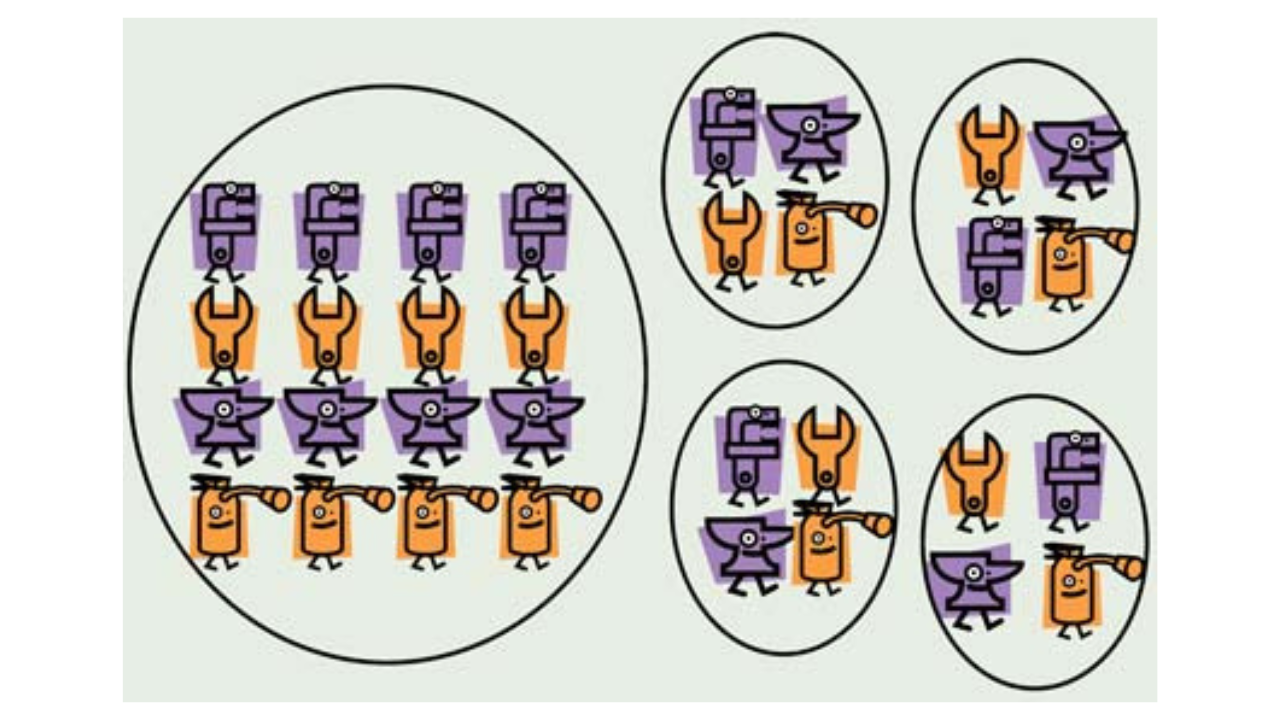Cutting Maintenance Cost Through Effective Shutdown Management
David Krings, Potlatch
Cutting costs has become a high priority, due to the recent economic conditions. Maintenance shutdowns are a major part of the annual budget at most mills, and are usually a target for cost reduction. Maintenance shutdown costs can be reduced by 30-50 percent from historical levels, with start up after the outage occurring smoothly and predictably. Using simple and effective shutdown management techniques can result in such improvements, creating savings equal to several weeks of additional production each year. This can be done without sacrificing any work, or canceling any scheduled downtime.
Effective shutdown management is critical to the operation of most facilities. Without well-planned and executed shutdowns, equipment reliability suffers, and the plant pays the price with poor quality and lost production. Becoming proficient at managing shutdowns is the path to reducing overall downtime costs, so the shutdown itself does not consume the savings it is capable of generating. It is an exercise in waste reduction. The actions needed to make shutdowns more cost effective can be taken immediately if the principles of successful shutdown management are clearly understood.
3 Key Concepts
There are three basic concepts that govern how we should manage the planning and scheduling of each shutdown. Shutdowns have a serious affect on mill success, and low-cost, quality shutdown management techniques are different from traditional practices. The three important concepts that differentiate a well-managed shutdown from a poorly managed one are:
- What type of work is executed during the shutdown
- When the shutdown work list is finalized
- How well the shutdown work is planned
What type of work is executed during the shutdown: It is vitally important that the shutdown work list be kept as short as possible. This is both a means to reduce costs, and the primary method for remaining focused on work that can only be done during a major outage. All other work should be deferred to a time outside of the shutdown window. The main activity during the shutdown should be preventive in nature (including equipment inspections), followed by cleaning and repairs. When this basic concept is followed, it results in reduced overtime, lower contractor costs and superior documentation. It is also almost certain that the budget will be met. During the April 2001 steam utility outage at Potlatch’s Cloquet mill, one department completed its work within 3% of its budgeted cost using the short work list method for the second year in a row.
It is common to find that many mill personnel believe that it is wise to execute as much work as possible during a major outage, arguing that major shutdowns should be filled with the maximum activity. There is also pressure to eliminate scheduled minor repair days by executing this work during the major outage instead. It is likely that additional costs for overtime labor, expedited parts delivery, execution of unplanned work and reduced worker efficiency will exceed the apparent savings. In one case, insisting on the maximum workload possible during the shutdown to avoid a scheduled minor repair day cost $300,000 more in labor alone than taking the minor downtime as scheduled. The same work would have been completed in either case.
Major shutdowns should never be used to avoid taking periodic minor downtime. Minor downtime is important, because it provides an opportunity to do preventive maintenance and repairs that cannot be done during operation. Each facility must determine the frequency of its planned minor downtime events, and once an effective cycle is established, it should not be interrupted needlessly.
There is a delicate balance between scheduled downtime and plant reliability. Major shutdown work is intended to support maintenance efforts carried out until the next major shutdown, including minor downtime repairs. An easy measurement technique is available to help in determining whether outages and other maintenance work are providing maximum value. If the ratio of the Mean Time Between Production Loss (MTBPL) and Mean Production Loss (MPL) 1 are tracked over time, one can readily see if the plant is experiencing greater reliability and less severe failures (Figure 1).

When the shutdown work list is finalized: While this is not a budget development exercise, shutdowns do have a significant impact on the budget. The long-term plan for shutdown management should be outlined in the budget forecast 3-10 years before execution. In the long-term plan, there should be fairly detailed lists of the major work that must be done during each shutdown in the coming years. For instance, boiler inspections, relining of large tile tanks, sewer repairs and electrical power distribution system inspections should be planned and estimated in the long-term plan. Some funds must also be included for smaller repairs needed during the shutdown, which is often estimated as a lump sum figure. The long-term plan is the tool for controlling the scope of each outage. Long-term planning is a critical and often overlooked piece of the proactive approach to maintenance. Without a long-term plan, major repairs and inspections often do not get adequate attention until it is too late to properly prepare for their execution.
Normally, a new operating budget is constructed annually. In order to get a major shutdown accurately budgeted, the scope, duration and timing of the outage must be supplied before the budget is approved. This means that any major shutdown must be scoped to an accuracy of +/- 10% at least 18 months before it is scheduled to take place, in order for the budget process to proceed. This is the short-term plan for shutdown management. The short-term plan can be developed using the long-term plan as a starting point. In addition to the large, expensive repairs, the short-term plan must include detailed lists and estimates for the smaller, less costly work. As the budget and shutdown plan enter the approval process, it should be clear what the upcoming outage will accomplish. It should be relatively easy to establish which projects are driving the outage. If this is not the case, then a shutdown is probably not justified.
It is acceptable to rearrange and substitute jobs for an outage up to six months before it occurs, provided the budget contains funding for the work. Plant management should seriously enforce the six-month lockdown, and anything brought up for addition after the lockdown date should be carefully scrutinized. Usually, it is necessary to drop another job to make time and funds available to do the additional work. If this rule is not enforced, planning efficiency for the shutdown will rapidly drop to unacceptable levels. Parts delivery issues will also be a problem. Jobs added on short notice before a shutdown is generally the cause of most disruption to planned and scheduled work. Also, it is important to remember that planning work is expensive, and cancellation of a job that is already planned with parts onsite is extremely wasteful.
The use of specific, challenging lockdown dates is a concept that may be difficult to accept. The 18-month budgetary work list is often misunderstood, because it is not immediately clear how anyone could know in advance what repairs would be needed. This is where planning comes into play. Each facility usually knows what work must be done every outage. Review repair histories, and make an educated estimate of the time, materials and expenses that commonly occur with each project. If you don’t have this information, now is an appropriate time to start building a history file for all equipment. Planning ahead for outages will get simpler as the proactive approach gains acceptance (Figure 2).

A word of caution is in order at this point. Do not estimate the budget for shutdowns using budget figures from the past. You will over-budget significantly, if the plant has adopted the new methods. It is not uncommon to achieve shutdown cost reductions of 50 percent or more.
How well the shutdown work is planned: The quality of the planning time that is invested in each shutdown will directly affect the completed work. More work will get executed with fewer people, in less time, if it is well planned. Repair quality will increase, and the cost for each repair will drop significantly. Unplanned repair work orders that used to take 8 hours to complete will take less than 2 hours when planned (on average). This is due to a combination of better instructions, easy access to parts, tools and materials, and better coordination of resources. In some cases, the savings will be as high as 90%.
Each work order (sometimes called a job order or service order) should be planned before execution. This includes all preventive maintenance work, as well as repairs and route checks. It is very important that adequate personnel be dedicated to planning work full time. If this is not done, planners will often get pulled into the role of supervisor, craftsperson or parts chaser. None of these activities will increase the efficiency of maintenance activities by the magnitude that planning will accomplish.
Each planned job is accompanied by a work package, which is a written document containing all information needed to execute the work. The work package includes:
- A clear scope of the work required
- An accurate estimate of the manpower required
- A detailed procedure for performing the work
- A complete list of all tools and equipment required
- All non-standard tools acquired and staged at work site
- A detailed parts list
- The location of the parts, staged near the work area in kit form.
- All necessary permits attached
- Sketches, drawings, digital photographs as necessary
- Contact information, should questions arise
- Special notes, instructions
- Coordinated vendor support etc.
- Schedule for execution for each craft, production etc.
- Safety and environmental hazard communication
- Personal Protective Equipment (PPE) required
Any work that is placed on the shutdown schedule (or on any schedule) should be fully planned. If this is not done, it effectively places the burden of planning the job on the craftsperson. This slows the work tremendously, and creates numerous opportunities for delays, mistakes and confusion. It is also much safer to execute planned work, because the hazards are methodically identified and avoided.
Technicians who are accustomed to working on planned jobs become the greatest source of valuable information in the process. They identify weaknesses in the planned work packages, and they have the time to document these weaknesses for correction. As time passes, most routine repairs will have work packages collected in the history file. When that happens, the time required to plan repeated jobs in the future will be reduced, and the planners can shift their focus to continuous improvement efforts. This is the point where proactive maintenance begins to save increasingly large amounts of money. The knowledge base for doing almost all maintenance activities will then be accessible to the entire workforce.
Where do the Savings Come From?
In a side-by-side comparison of quality shutdown management philosophy versus a poor shutdown approach, it becomes very clear where opportunities for cost reductions exist (Figure 3).

Conclusion
Shutdown management is an effective tool for reducing costs and increasing plant productivity. When the decision is made to identify major outage work far in advance and then carefully plan the work for maximum ease of execution, the result will be lower costs. If, at the same time, disruptions to the process (such as late add-on work) are kept under control, there will be sufficient resources available to continually refine and improve the shutdown model for even greater savings.
REFERENCE: Christer Idhammar, “Operations + Maintenance = Production II,” Article, Pulp & Paper, October 2000, IDCON INC
David Krings, Potlatch
Related Articles

A Planner's Tool Kit

Uptime: Fill Out Work Orders? Who's Got Time for Paperwork?

Tips for Maintenance Planning

Centralized Maintenance vs. Decentralized

You Cannot Maximize Production or Reduce Costs Without the use of an Effective Planned Maintenance System

Work Order Prioritization




